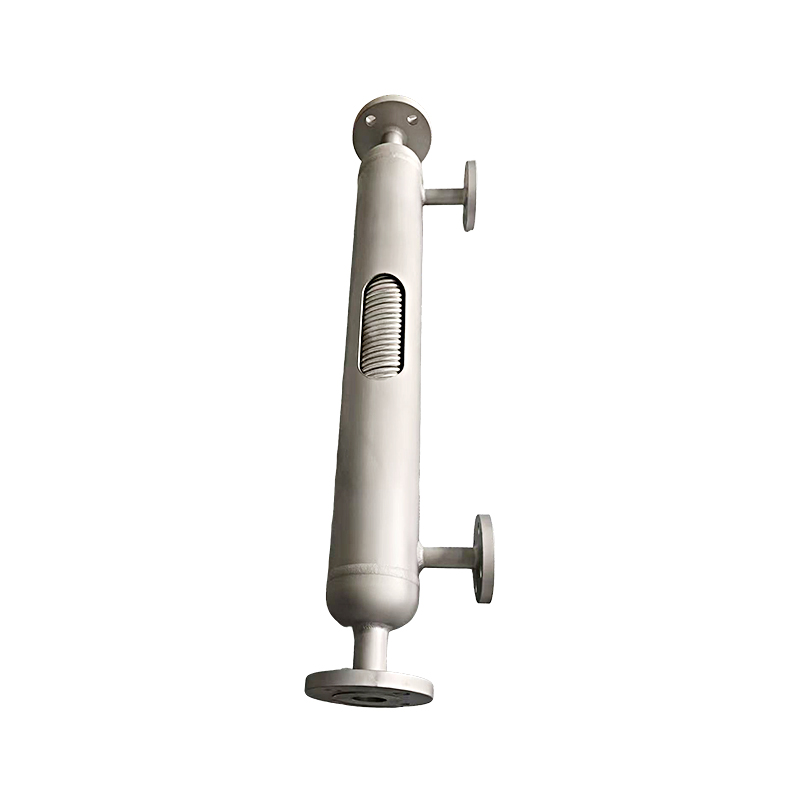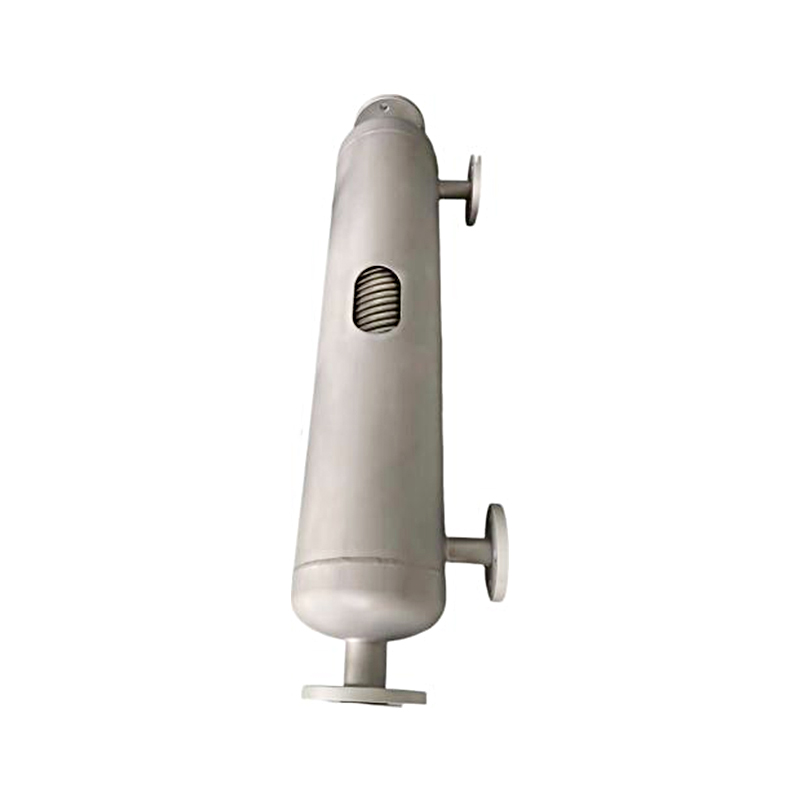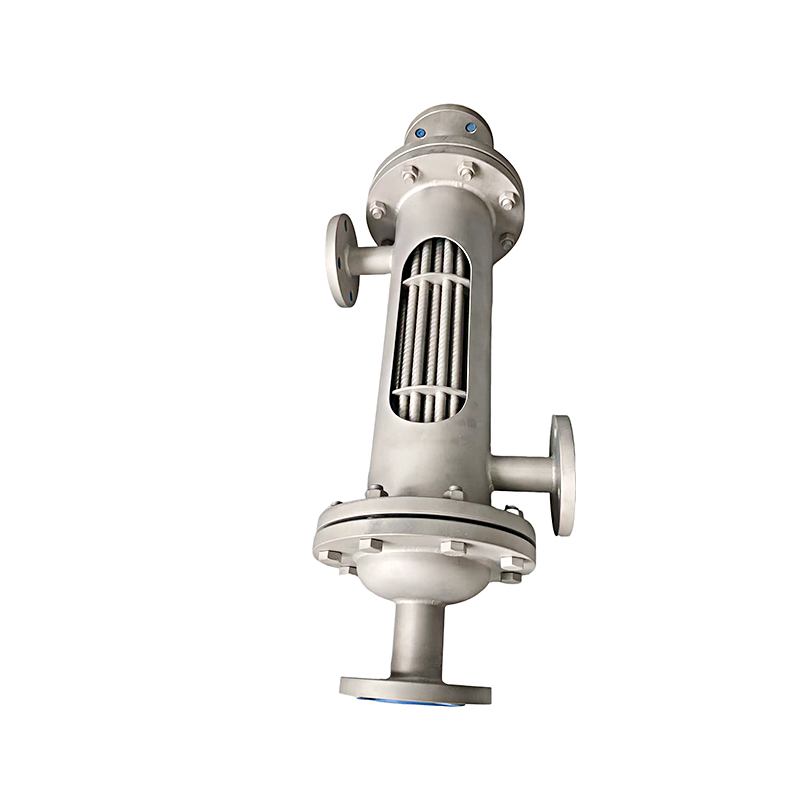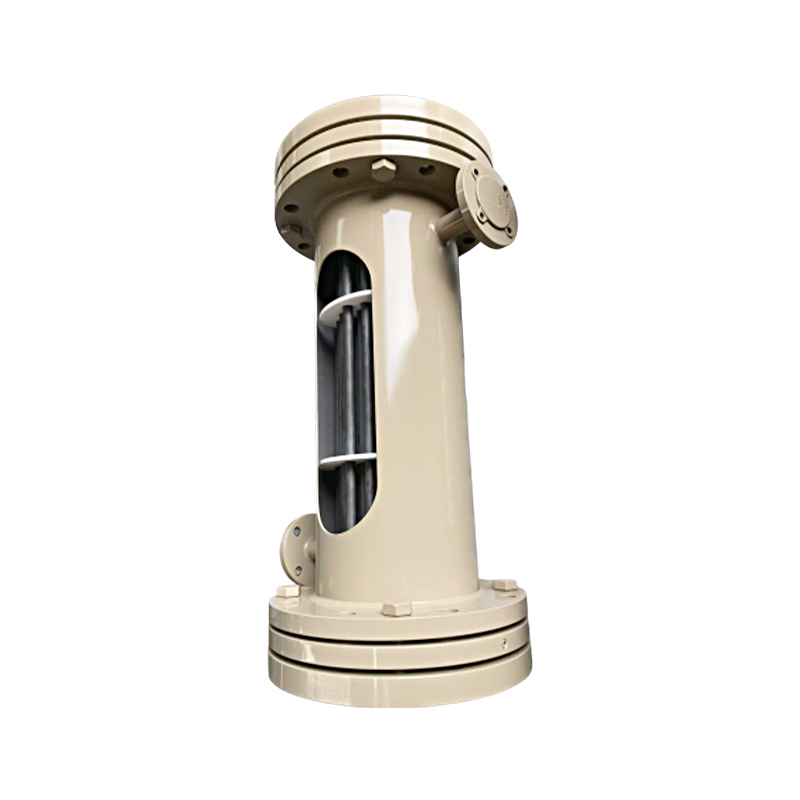What is the key role of a dense oxide film in improving corrosion resistance?
Release Time : 2025-08-28
In demanding environments such as chemical engineering, marine engineering, pharmaceuticals, and high-end manufacturing, the corrosion-resistant spiral wound titanium heat exchanger, like a wise guardian clad in silver armor, silently endures the extreme tests of strong acids, strong bases, high salt concentrations, high temperatures, and high pressures with its unparalleled corrosion resistance and efficient heat transfer capabilities. It is not only a core hub for heat exchange but also a pinnacle of materials science and precision manufacturing. It perfectly blends the unique advantages of titanium with the heat transfer wisdom of a spirally wound structure, showcasing the strength, elegance, and timelessness of industrial equipment in extreme environments.
The inherent beauty of the corrosion-resistant spiral wound titanium heat exchanger stems from the harmonious union of its metallic luster and precise structure. The aesthetics of this heat exchanger are first and foremost reflected in the natural charm of its core material: titanium. Titanium, known as "space metal" or "ocean metal," possesses a unique and elegant silver-gray color with a soft metallic luster. Neither the starkness of stainless steel nor the frivolity of aluminum alloy, it exudes a calm, restrained, and technological quality. When processed into slender heat exchange tubes and precisely wound into spirals, their surfaces are polished or passivated, reflecting a uniform, warm luster resembling flowing liquid metal. The entire device's outer shell and tube bundle visually create a contrast of both rigidity and flexibility: the sturdy shell resembles armor, while the tightly packed, tightly wound titanium tubes within resemble a sophisticated "energy coil." This complex geometric structure, composed of countless concentric rings, not only maximizes the heat transfer area but also constitutes an industrial art form rooted in precision and order. As light passes through the wound tube bundle, light and shadow play between the spiral's grooves and protrusions, creating a captivating visual rhythm. Its beauty lies in the purity, coolness, and timelessness forged from the combination of high-strength, corrosion-resistant materials and efficient heat transfer design.
The unique characteristics of the titanium corrosion-resistant spiral wound tube heat exchanger are rooted in its in-depth integration of extreme corrosion resistance, efficient heat transfer, and compact structure. Its core feature lies in the exceptionally long life and reliability afforded by its extreme corrosion resistance. Titanium possesses an inherently superior passivation ability, forming a dense, stable oxide film on its surface, making it highly resistant to seawater, chlorides, hypochlorites, wet chlorine gas, various strong acids (such as nitric acid and organic acids), and strong alkalis. In applications such as offshore platforms, desalination plants, and the chlor-alkali industry, where traditional metals are prone to corrosion and failure, titanium heat exchangers offer long-term, stable operation with virtually no maintenance. This eliminates the pain points of equipment leaks, downtime, and high replacement costs caused by corrosion, and is a lifeline for ensuring continuous production.
This efficient heat transfer is achieved through the unique spiral wound design. Slender titanium tubes are tightly wound around a central tube in a spiral pattern, forming a unique heat exchange path. This structure creates intense turbulence between the hot and cold fluids in the shell and tube sides, significantly improving the heat transfer coefficient. At the same time, the centrifugal force generated by the spiral structure helps break up the fluid boundary layer, further enhancing heat transfer. Compared to traditional shell-and-tube heat exchangers, this unit offers a larger heat transfer area and higher heat transfer efficiency within the same volume, resulting in significant energy savings.
"Compact structure" reflects its intelligent use of space. The spirally wound design allows long heat exchange tubes to be tightly packed within a limited space, resulting in a compact and relatively lightweight unit (thanks to titanium's high specific strength), making it easy to install and maintain in space-constrained locations. Its compact structure also reduces fluid retention time within the unit, minimizing the risk of scaling and clogging.
The corrosion-resistant titanium spiral wound tube heat exchanger is the "eternal shield" of the industrial sector. Its titanium armor resists the erosion of strong acids and saltwater; its spiral intelligence efficiently transmits the pulse of energy; and its compact design ensures reliable operation in extreme environments. When operating stably in chemical plants or on ships, its tranquil silver-gray exterior conceals intense heat exchange. It demonstrates that true value lies in meeting the toughest challenges with the strongest materials and the most intelligent design. It is the ultimate embodiment of modern industry's pursuit of high reliability, long life and high efficiency. During its silent operation, it builds an indestructible barrier for the smooth operation of key processes. It is the most elegant and powerful winner in the game between technology and natural forces.
The inherent beauty of the corrosion-resistant spiral wound titanium heat exchanger stems from the harmonious union of its metallic luster and precise structure. The aesthetics of this heat exchanger are first and foremost reflected in the natural charm of its core material: titanium. Titanium, known as "space metal" or "ocean metal," possesses a unique and elegant silver-gray color with a soft metallic luster. Neither the starkness of stainless steel nor the frivolity of aluminum alloy, it exudes a calm, restrained, and technological quality. When processed into slender heat exchange tubes and precisely wound into spirals, their surfaces are polished or passivated, reflecting a uniform, warm luster resembling flowing liquid metal. The entire device's outer shell and tube bundle visually create a contrast of both rigidity and flexibility: the sturdy shell resembles armor, while the tightly packed, tightly wound titanium tubes within resemble a sophisticated "energy coil." This complex geometric structure, composed of countless concentric rings, not only maximizes the heat transfer area but also constitutes an industrial art form rooted in precision and order. As light passes through the wound tube bundle, light and shadow play between the spiral's grooves and protrusions, creating a captivating visual rhythm. Its beauty lies in the purity, coolness, and timelessness forged from the combination of high-strength, corrosion-resistant materials and efficient heat transfer design.
The unique characteristics of the titanium corrosion-resistant spiral wound tube heat exchanger are rooted in its in-depth integration of extreme corrosion resistance, efficient heat transfer, and compact structure. Its core feature lies in the exceptionally long life and reliability afforded by its extreme corrosion resistance. Titanium possesses an inherently superior passivation ability, forming a dense, stable oxide film on its surface, making it highly resistant to seawater, chlorides, hypochlorites, wet chlorine gas, various strong acids (such as nitric acid and organic acids), and strong alkalis. In applications such as offshore platforms, desalination plants, and the chlor-alkali industry, where traditional metals are prone to corrosion and failure, titanium heat exchangers offer long-term, stable operation with virtually no maintenance. This eliminates the pain points of equipment leaks, downtime, and high replacement costs caused by corrosion, and is a lifeline for ensuring continuous production.
This efficient heat transfer is achieved through the unique spiral wound design. Slender titanium tubes are tightly wound around a central tube in a spiral pattern, forming a unique heat exchange path. This structure creates intense turbulence between the hot and cold fluids in the shell and tube sides, significantly improving the heat transfer coefficient. At the same time, the centrifugal force generated by the spiral structure helps break up the fluid boundary layer, further enhancing heat transfer. Compared to traditional shell-and-tube heat exchangers, this unit offers a larger heat transfer area and higher heat transfer efficiency within the same volume, resulting in significant energy savings.
"Compact structure" reflects its intelligent use of space. The spirally wound design allows long heat exchange tubes to be tightly packed within a limited space, resulting in a compact and relatively lightweight unit (thanks to titanium's high specific strength), making it easy to install and maintain in space-constrained locations. Its compact structure also reduces fluid retention time within the unit, minimizing the risk of scaling and clogging.
The corrosion-resistant titanium spiral wound tube heat exchanger is the "eternal shield" of the industrial sector. Its titanium armor resists the erosion of strong acids and saltwater; its spiral intelligence efficiently transmits the pulse of energy; and its compact design ensures reliable operation in extreme environments. When operating stably in chemical plants or on ships, its tranquil silver-gray exterior conceals intense heat exchange. It demonstrates that true value lies in meeting the toughest challenges with the strongest materials and the most intelligent design. It is the ultimate embodiment of modern industry's pursuit of high reliability, long life and high efficiency. During its silent operation, it builds an indestructible barrier for the smooth operation of key processes. It is the most elegant and powerful winner in the game between technology and natural forces.








